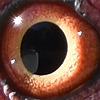HOME | DD
 TheBootesArtVoid — Noisy Miner
TheBootesArtVoid — Noisy Miner

#animal #bird #birds #natural #nature #noisyminer #noisyminerbird #animalphotography #animals #naturephotography #photographyanimals #photographynature #birdphotography #thebootesartvoid
Published: 2021-06-12 08:16:04 +0000 UTC; Views: 2877; Favourites: 183; Downloads: 0
Redirect to original
Description
Species Name: Noisy Miner
Species Latin Name: Manorina melanocephala
Also known as: Micky and Soldierbird. Formally known as Garrulous Honeyeater
Baby Name: Chick
Similar Species:
Yellow-throated Miner (Manorina flavigula)
Black-eared Miner (Manorina melanotis)
Native To: Australia
Located in: Throughout southeast portions of South Australia, all of Victoria, eastern portions of Tasmania, eastern portions of New South Wales, and the eastern portions of Queensland.
Habitats: Forests, grasslands, savanna's, shrublands, urban areas, agricultural areas, woodlands, and suburban areas.
Size (length): 240 – 280 mm (9.4 – 11.0 inches)
Wing span: 130 – 450 mm (5.1 – 18 inches)
Bill size: 24 mm (1 inch)
Weight: 55 – 80 g (1.9 – 2.8 ounces)
Lifespan: 7 – 9 years
Group size: Rarely seen alone, can form colonies consisting of several hundred birds. Within colonies flocks can vary between 5 – 40 birds.
Diet: These birds primarily eat nectar, fruit, and insects. Occassionally they will eat small reptiles or amphibians.
Lifestyle: Terrestrial, territorial, arboreal, congregatory, altricial
Migration Behaviour: Not a migrant
Voice: As the name suggests these birds are unusually noisy largely owing to their communal nature. They have a large and varied repertoire of songs, calls, scoldings, and alarms most of which consist of loud, harsh, and penetrating single notes. They have different alarm calls depending on whether an intruder in their territory is land based or based in the air. Other calls will be sounded for various activities these birds will go throughout their day.
One of their more familiar 'meee, meee, meee' calls be heard throughout the day with great variation.
A 'tiu-tiu-tiu' can be used as a territorial advertising or as a dawn song.
A 'chur-chur-chur' can be used to indicate a disturbance within the colony.
A higher pitched 'weee-weee-weee' can be used to indicate an aerial predator.
Juveniles will make an incessant 'chip' sound which will grow in frequency the closer their parents are.
There are plenty of other intricacies regarding the various sounds these birds make. They can also produce non vocal sounds by clicking or snapping its bill, usually during antagonistic encounters with other bird species or when mobbing a potential predator.
Mating Behaviour: Monogamy
Reproductive Season: June to December as well as March - April
Nest Description: Nest will be deep and cup-shaped. Nest will be made of woven twigs, grasses, other plant materials, animal hair and spider webs. It is lined with wool, hair, feathers, flowers, or plant down. The nest is then padded with a circular mat woven from fibers pulled from the cocoons of the processional caterpillar. These birds prefer to place these nests in moderately dense foliage, usually near the end of drooping horizontal forks and branches.
Eggs Per Clutch: 2 – 4 eggs
Egg Description: General colouration will be Buff-white with a bit of pink. Eggs will have small freckles/spots/blotches that are either red-brown, blue-grey, or lilac in colour.
Egg Size: 27 – 18 mm (1.1 – 0.7 inches)
Incubation Period: 16 days
Independent Age: 47 – 51 days
Scientific Classification:
Domain: Eukaryota
Kingdom: Animalia
Phylum: Chordata
Class: Aves
Order: Passeriformes
Family: Melephagidae
Genus: Manorina
Description:
Noisy Miners are moderately sized honeyeater birds with light grey feathers along their chest that turn more white towards the stomach and the underside of their tail feathers. Along the cap of their neck they will have dark grey feathers and the top of their had will be black. More black feathers will appear behind their eye, along their cheek and jaw. They have a white forehead and cheeks. They have a yellow bill, a distinctive yellow patch of skin around their eye, and long yellow legs and feet.The rest of their feathers along their back, wings, and tail will appear a moderately dark grey with hints of olive along their wing feathers. They have very dark brown eyes.
Behaviour:
Despite their moderate size these birds will frequently attack larger birds such as hawks and kookaburras in order to protect their territory. Their aggression towards others is so strident that other birds will be excluded by areas occupied by the noisy miners. These birds will forage, bathe, roost, breed and defend territory as a community. Each bird will have an 'activity space', individuals that have overlapping spaces form associations with one another called 'coteries' which are the most stable unit in the colony. These birds will form temporary flocks called 'coalitions' for specific activites such as mobbing a potential predator. These birds communicate not only through their complicated and varied calls but also through various ritualized displays which include flight, postural, and facial displays. Whilst these birds may generally forage in groups of 5 – 8 birds within their designated space they can gather in the hundreds at flowering trees such as a banksia.
These birds are monogamous and will form breeding pairs within their colonies, the birds will breed communally and will raise their chicks with other Noisy Miners in the colony acting as helpers. The courtship display of the male will involve 'driving' where the male jumps or flies at the female from 1-2 meters (3.3 – 6.6 feet) away. If the female moves away the male will pursue the female with aggression. The female during courtship may adopt a 'bowed-wing display' whereas the male may addopt an 'eagle display'. The female will build the nest on her own.
Population Trend: Increasing
Conservation Status: Least Concern
Potential threats and conservation: As this species is abundant throughout its significant range they are consider least concern, they do not currently face any major threats currently.
Further Reading (general information):
Wikipedia: en.wikipedia.org/wiki/Noisy_mi…
Birdlife: birdlife.org.au/bird-profiles/…
Australian Museum: australian.museum/learn/animal…
Animalia: animalia.bio/noisy-miner
Backyard Buddies: backyardbuddies.org.au/backyar…
Ebird: ebird.org/species/noimin1
Book References:
The Australian Bird Guide Revised Edition published by CSIRO Publishing
The Field Guide to the Birds of Australia published by Harper Collins
The Slater Field Guide To Australian Birds Second Edition by Peter Slater, Pat Slater, and Raoul Slater
Related content
Comments: 18

👍: 1 ⏩: 1

👍: 0 ⏩: 1

👍: 1 ⏩: 1

👍: 0 ⏩: 0

👍: 1 ⏩: 1

👍: 1 ⏩: 1

👍: 1 ⏩: 0

👍: 1 ⏩: 1

👍: 1 ⏩: 0

👍: 1 ⏩: 1

👍: 0 ⏩: 0

👍: 1 ⏩: 1

👍: 0 ⏩: 1

👍: 1 ⏩: 1

👍: 0 ⏩: 1

👍: 1 ⏩: 0

👍: 1 ⏩: 1

👍: 0 ⏩: 0


























